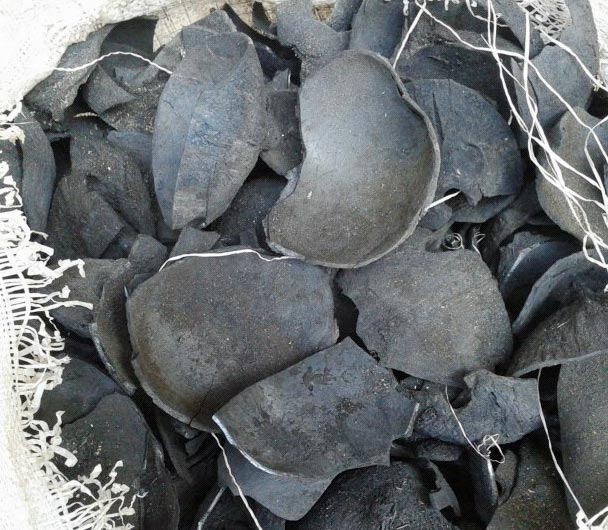Wastewater should be handled with proper handling of waste before being discharged into water bodies. Anaerobic wastewater treatment is often chosen because it has many advantages. Some advantages of anaerobic treatment such as sludge production are small, the amount of energy used is small, as well as the potential energy that can be produced in other forms. This wastewater treatment can potentially produce biogas. The stability of biogas production in anaerobic wastewater treatment can work less optimally due to organic material disturbance.
The use of media in anaerobic waste treatment is one of the efforts to stabilize the anaerobic process. Absorption of materials can interfere with anaerobic processes such as high ammonia (> 1500 mg / l) or toxic organic material by adding media to the anaerobic wastewater treatment system. Besides, the use of media that has a fairly affordable cost is coconut shell active charcoal media. Coconut trees are easily found in tropical and sub-tropical regions. Generally, people only use coconut meat, and they throw away the shell. So far, the use of coconut shells has only been used as charcoal, cooking utensils, and filter media.
Coconut shell that has been heated at temperatures above 500 C will become charcoal. This coconut shell charcoal has a large pore cavity making it easier to absorb pollutants. Besides, it is necessary to have an adsorbent medium, and then the charcoal can be activated by acids and bases.
The use of coconut shell charcoal in water treatment certainly needs to pay attention to the technical aspects. The aspect of media saturation level is important in the application of coconut shell charcoal in waste treatment. The saturation shows that they need to change the media (coconut) with the new one. It will respond to different levels of saturation to different parameters. For instance, the response of coconut shell charcoal in absorbing organic material or different Chemical Oxygen Demand (COD) when absorbing ammonia. The particle size and composition of the two parameters will determine how long the coconut shell charcoal can be saturated. Saturated conditions in a media can be shown with the same concentration value between before and after the process at a certain contact time.
Besides, the type of flow when treating wastewater also affects the saturation level of filter media. There are two types of wastewater streams generally used, namely batches and wastewater that are processed continuously. Research on the level of saturation of coconut shell charcoal media in anaerobic wastewater treatment shows that coconut shell charcoal will easily saturate in absorbing ammonia with a contact time range of 6 days in a batch system and 21 days in a continuous system. Whereas coconut shell charcoal has a longer ability to absorb and remove COD for more than 30 days both continuously and in batch. It shows that coconut shell charcoal can be used longer to eliminate COD parameters
Author: Nur Indradewi Oktavitri, S.T., M.T.
This popular scientific article is written from the article published in
http://www.envirobiotechjournals.com/article_abstract.php?aid=9338&iid=268&jid=4
Nur Indradewi Oktavitri, Hery Purnobasuki, Eko Prasetyo Kuncoro, Indah Purnamasari dan Semma Hadinnata. 2019. Modelling of Fixed Bed Anaerobic Reactor with Coconut Shell as Media for Clogging Assessment in Batch and Continuous System. Poll Res. 38 (March Suppl. Issue): 81-86(2019). Copyright©EM International ISSN 0257–8050





